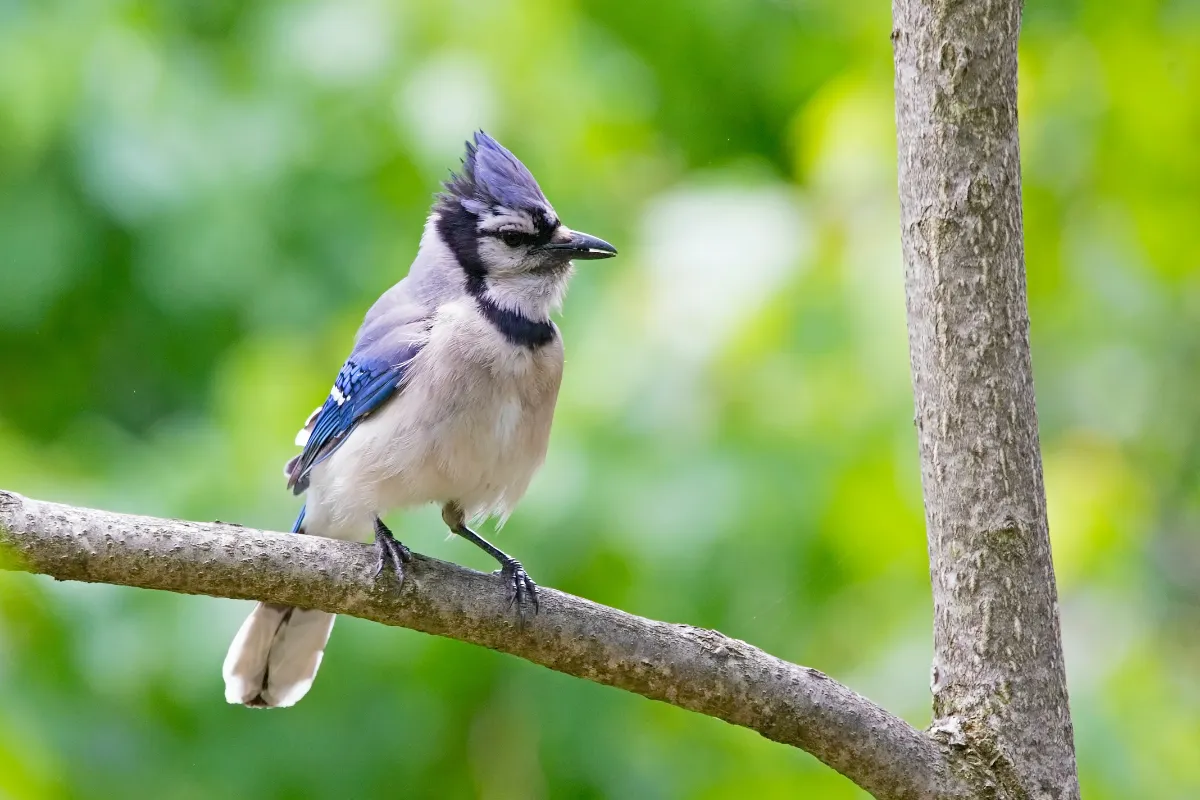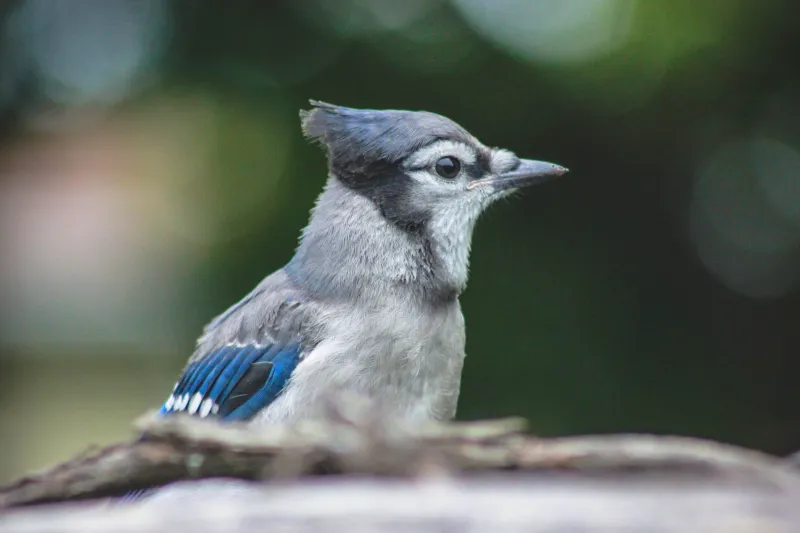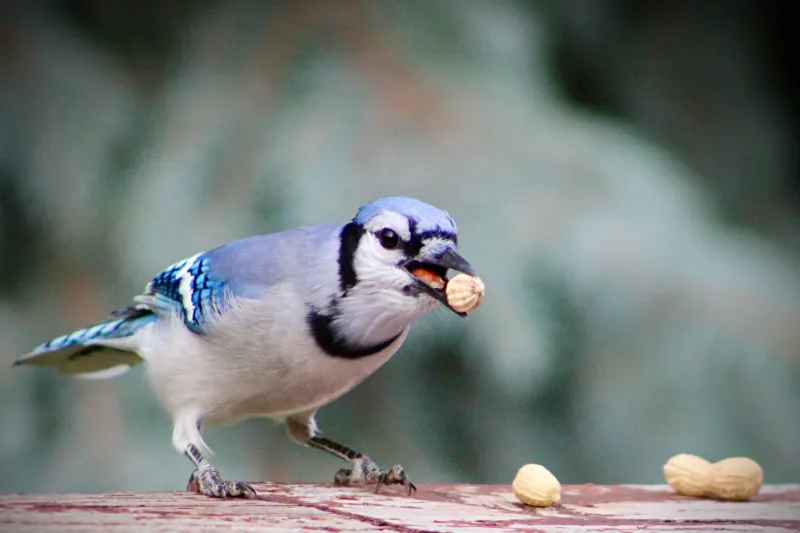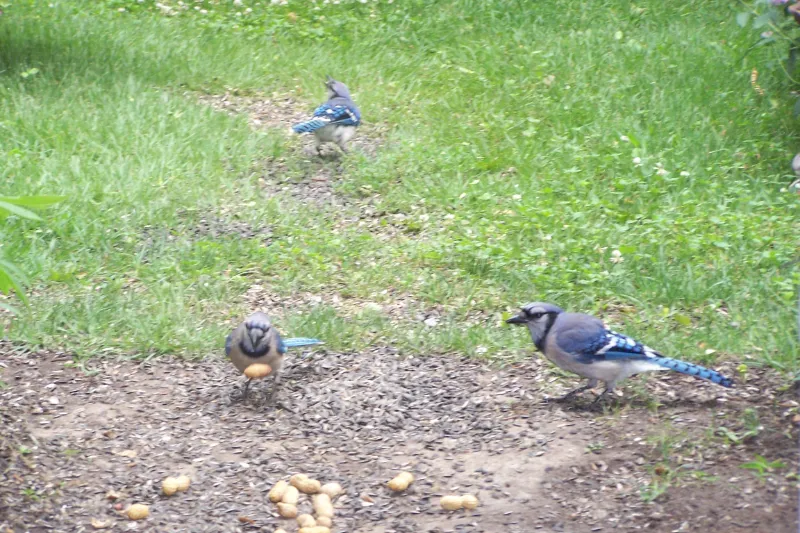What Do Blue Jays Eat?

Blue jays are one of North America’s most recognizable and beloved birds. They are known for their striking blue and white feathers, distinctive calls, and intelligent and aggressive personalities.

But what do Blue Jays eat, and where can you find them in the wild? And is it possible to keep blue jays as pets? In this article, we’ll explore the answers to these questions and more.
Where Do Blue Jays Live?
The eastern and central United States, as well as southern Canada, are home to blue jays. They prefer locations with deciduous trees and human habitation.
Dense woodlands are also favorable for these species.
They are frequently seen in parks and residential areas, and they like regions with a variety of trees. They are frequently seen in parks and residential areas, and they like regions with a variety of trees.
What Do Blue Jays Eat?
Blue jays are omnivorous birds, which means they eat both plant and animal matter. In the wild, their diet consists of a wide variety of foods, including seeds, nuts, fruits, insects, and small animals such as snails, worms, and frogs.

They are opportunistic feeders, meaning they will eat whatever food is available to them at the time.
Seeds and Nuts:
Blue jays have strong beaks that can crack open even the toughest seeds and nuts. They are especially fond of acorns, which they will collect and store in the fall to eat throughout the winter. Blue jays also eat other types of nuts, including hazelnuts, pecans, walnuts, hickory nuts, and other wild nuts.
Fruits:
Blue jays love to eat fruit, and they feast on a wide variety of berries, including blueberries, blackberries, raspberries, and cherries. They will also eat apples, pears, and other orchard fruits. In the fall, blue jays are known to eat large quantities of fruit, which they use to fatten up for the winter.
Insects:
Blue jays are skilled hunters and will eat a variety of insects, including beetles, grasshoppers, and caterpillars. They will also eat spiders and other arthropods. Insects make up a significant portion of a blue jay’s diet, especially during the breeding season when the birds need to provide protein-rich food to their young.
Small Animals:
Blue jays are known for their opportunistic feeding habits, and they eat small animals such as snails, worms, and frogs.
They have been observed raiding the nests of other birds to eat their eggs and young. They are also known to catch and eat small mammals, such as mice and voles.
Do Blue Jays eat Human Food?
In addition to the information provided on food sources above, blue jays eat human food scraps and will visit bird feeders for seeds, nuts, and suet.
However, it’s important to note that not all human foods are safe for birds, so it’s best to provide blue jays with a varied diet of natural foods.

Blue jays obtain their food by foraging on the ground or in trees and bushes. They are active and agile birds, and they use their strong beaks to pry open seeds and nuts, and their sharp talons to catch insects and small animals.
In conclusion, blue jays are omnivorous birds with a diverse diet that includes seeds, nuts, fruits, insects, and small animals. They are opportunistic feeders that will eat whatever food is available to them at the time.
How Can I Keep Blue Jays at Home?
While blue jays are beautiful and intelligent birds, they are not suitable as pets. In most areas, it is illegal to keep blue jays in captivity without a special permit.
If you want to attract blue jays to your yard, there are a few things you can do to make your property more inviting to them. Here are some tips:
Provide a variety of food: Blue jays are omnivorous and will eat a variety of foods. Try putting out different types of birdseed, suet, nuts, and fruit to attract a variety of birds, including bluejays.
Offer a bird bath: Blue jays, like all birds, need water to drink and bathe in. Provide a shallow bird bath or fountain with clean, fresh water.
Provide shelter: Blue jays will appreciate a place to roost and take cover from the weather. Provide birdhouses or natural shelters such as trees or shrubs.

It may take some time for blue jays to discover your yard and start visiting your feeders. Be patient and consistent in your feeding and watering habits, and eventually, the birds will come.






